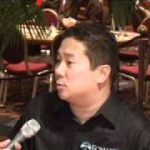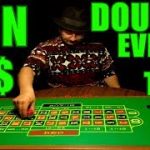Poker Strategy Info And Source:
When is attempting to play a Game Theory Optimal Strategy not optimal? Let Phil break it down for you in his latest video. Detailing the pitfalls and exploitable patterns you can observe in a player only looking to play “optimally”, you and your “human brain” can do a lot to win at the table against them. If this helps and you find some new approaches from watching, subscribe to the channel for more (if you haven’t already)!
00:00 The Problem with GTO Tunnel-Vision
00:58 Quick Explainer of Optimal Strategy
02:07 You Cannot Exploit a Player Who is Calling Optimally
03:10 An Optimal Player will Lose Money But is Never Exploited
03:53 A Player that is VERY Exploitable But Looses the Least
05:32 In Practice No One is Capable of Optimal Play
07:30 Adjustments and Deviations can be Made When Playing Against a GTO Focused Opponent
Follow Phil!!!!!!!!!!!:
Twitter: https://twitter.com/philgalfond
Instagram: https://www.instagram.com/phil.galfond/
#102040Challenge
The Problem with GTO Tunnel-Vision
Producer: Thomas Deming-Henes
Post Producer: Anne Johnson
Music: DJ Spinello
Source: YouTube







Where Ms Optimal makes up for her losses, is when Joe checks, since he will be checking a lot more due to his lower bluff frequency. Ms Optimal gets to check back more marginal hands and win those pots, which makes up for her losses from calling his value hands.
Maybe what GTO does is mark a 0 point of sorts. If you sum every number (i.e. every strategy) in existence you get 0, since for every positive number there's an equal negative number. We aren't dealing with numbers though we are dealing with strategies, and the 0 strategy (the analogy of using numbers break down) can still be exploited. Nonetheless, the 0 point marks a special mathematical turning point. The 0 defines what we label and define all other strategies as. If you go to one side, you're "over bluffing" from the equilibrium, go to the other side and you're "under bluffing" from the equilibrium.
The numbers analogy breaks down because a numberline is a one dimensional axis and one dimension doesn't fit the complexity of poker why the equilibrium lies where it does. But the metaphor holds intuitively
I don't like this video simply because it's too true. I love it when people try to tell me GTO is the best strategy, then proceed to either hero call every bluff catcher or do some wild stuff because blockers; not understanding that GTO is between 2 bots, while 2 human will see substantial deviations from GTO especially OTT & OTR. In all seriousness tho, great work!
If Miss. Optimal lost 400 dollar playing "GTO" you don't understand what game theory is and what nash equilibrium is
Reply to me if I'm false in making the assertion that a static GTO strategy can be beaten, since thats the understanding I've come to now.
I'm not sure why something which is beatable is labeled as unexploitable. One strategy exploits another strategy, if, that strategy has a statistical/probabilistic likelihood of profiting against that other strategy. That seems like the most logical definition. This criteria is met for the underbluffer on the river when he faces Ms Optimal, where the underbluffer exploits Ms Optimal
Like if I'm wrong tell me. Ive thought about the times the underbluffer checks, but I'm not sure if it means ms optimal loses 0 money or not since everyone online says the same bad about how GTO is unbeatable
This is why we really need to stop calling Nash Equilibrium "Game Theory Optimal." And also stop calling exploitative play exploitative.
We should call it "Equilibrium" and "Optimal."
If you node lock a solver and tell the solver the strategies you outlined in this very good video, it wouldn't tell you to continue to play in equilibrium. As that would no longer be the optimal strategy. It will instead advise you to deviate.
If we continue to call an equilibrium strategy "optimal" we are just going to continue to give the false view that GTO and Exploitative are somehow different. They go hand in hand and shouldn't be separated.
Calling a strategy "optimal" when it's clearly not the optimal strategy because an opponent is deviating is just a disservice to everyone. (obviously this isn't your fault, so I apologize if this seems like I'm blaming anyone in particular).
Using the oversimplified RPS example, and equilibrium strategy of playing each randomly 1/3 of the time is no longer optimal if an opponent is playing paper 100% of the time. And I think everyone would agree calling the 1/3 equilibrium strategy "optimal" would be an incorrect use of the word. But we don't seem to share that opinion when we talk optimal strategy in poker.
Okay I've grabbed the pen and paper out. Your calculations all seem correct, given the assumptions. -20x pot is the loss over 100 simulations. The questions becomes twofold for me. 1) Was the bluffing rate and calling rate you provided GTO 2) Im unable to quantify the money gained from the checks of someone who underbluffs spots on the river. Partially because I'm unable to quantify the number of times someone will have air as opposed to having a/the great hand, the parameters are just so broad and I'm a tiny human. I cannot solve the entirety of poker. I'll have to read an entire book first on how to play GTO before I get an opinion
Speed reading let's go
I'm about to go meta. Even if we were to find out that GTO is an unexploitable strategy exactly like 33.3% (which I'm not sure it is) , we must look at the conceptual objects we construct which then get called "strategies". We define a strategy in terms in frequencies of actions, and it also relies on the assumption of ranges. Ranges don't exist. Ranges are a construction. A range is nothing more than an estimate of what hands I might be playing.
And even if GTO was the correct thing in theory, which I'm not sure of yet, I would still not be too fond of it. Why? Because poker is a game of incomplete information, all this information about someone's range and what their frequencies are, often this cannot be figured out with numerical precision. Real life isn't these concepts. It's the very act of putting a number to things that creates a concept disconnected from actuality
Mr Subscriber is 110% happy with these kind of videos.
i don't understand how you can group all river play together and say you're going to set your river bluff frequency at 33%. there are many factors that guide my river decisions and if i tried to align my decision frequencies with percentages set by mass data (i assume?) i just don't think i would be playing properly. for example, I wouldn't know where to begin to find out if i'm overfolding or underfolding rivers. river spots are so different from each other, some are complex , some are simple, sometimes they can be indifferent to the action.
futhermore, if these types of adjustments are needed to beat the games you are playing in, it's probably best to find another game. a smaller game with worse players could produce much higher profit than the higher stake game full of gto players trying to exploit each other.